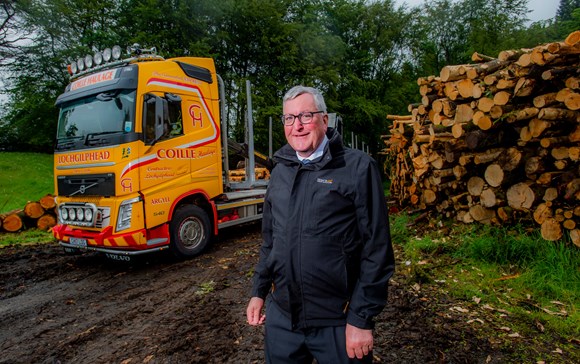Work on rural and minor routes across the north will get underway thanks to more than £3 million from a Scottish Government fund to reduce the impact of timber lorries on the road network.
£2.58 million in Argyll, and £527,600 in the Highlands has been awarded to local authorities from the Strategic Timber Transport Fund, which is managed by Scottish Forestry.
The money will go towards the improvement of rural roads used by timber wagons.
Of the money awarded in Argyll, £1.78 million has been allocated to support road strengthening while £800,000 has been awarded to support the TimberLINK shipping service.
The shipping service moves up to 100,000 tonnes of timber from forests in Argyll to markets in Ayrshire, taking nearly a million lorry miles off the public road. The project will see the building of a loading ramp on Loch Striven for timber to be transported straight from lorry to the sea.
In the Highlands projects include: emergency repairs on the A897 Helmsdale – Melvich road, improvements to the A831 Cannich – Struy road and funding will also go to a tyre pressure control trial.
The funding will also support two timber transport project officers who will give advice across Argyll and Bute and Highland.
Announcing the funding, cabinet secretary for the rural economy, Fergus Ewing, said: “Scotland’s £1 billion forestry industry is going from strength to strength, producing millions of tonnes of high quality timber every year that will greatly benefit our rural economy.
“However, it is important that we do what we can to mitigate the impact on local communities of increased volumes of timber coming to market.
“That is the key purpose of the Timber Transport Fund and it is encouraging to know that local authorities and forest owners continue to bring forward project ideas that will facilitate the sustainable transport of timber and ultimately benefit local communities and the environment.”
David Sulman of Confor, the confederation of Forest Industries, said: “This funding is greatly needed to improve our rural roads to suit modern land uses such as forestry.
“Work on minor roads – whether it is strengthen the road surface, widening corners, adding traffic calming measures or providing passing places – makes it easier for local residents and business to share the rural road network.”
